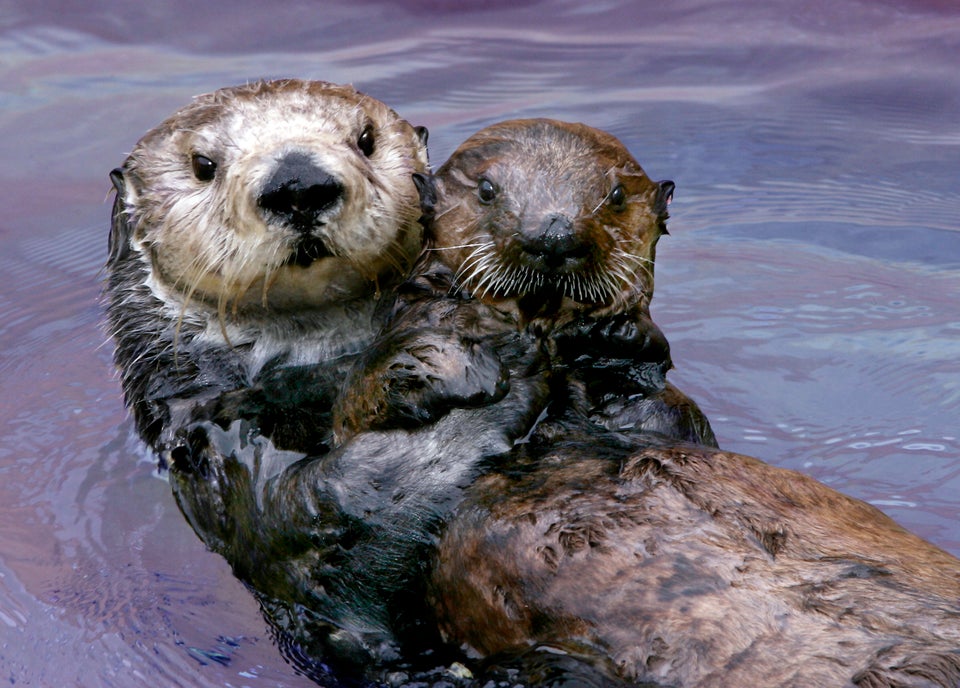
Coral reefs are up against steep odds, according to the 2014 National Climate Assessment released last week.
Among the many scary charts therein, those illustrating the affects of ocean warming and acidification on coral reef are most ominous for Hawaii, where more than 60 percent of the country’s reefs exist.
In the Aloha state, reefs are home to 7,000-plus marine inhabitants and work to effectively diminish wave energy in major storms, thus protecting land from surges. Hawaii's beautiful bays and white sand beaches are also related to reef ecosystems, including the major tourist activities of snorkeling, diving, and surfing.
But scientists say the ocean is currently warming at a rate 15 times faster now than in the past 10,000 years, which can cause coral to bleach. When coral bleaches or its pH levels fluctuate, it can become infected by disease or otherwise weakened, thus making it more susceptible to storm surges, human interaction, or other things from which it would normally be able to protect itself.
So how can we protect coral reefs before it's too late? A team of pioneering researchers in Hawaii has an audacious plan: cross-breed superpowered reefs to preempt these dangers. The idea is to build reefs already pre-evolved to future conditions so that they might successfully reproduce in a more hostile ocean.
“If one were to design an intervention, this is the time to do it, while you still have biological material to work with,” Dr. Ruth Gates, a researcher with the University of Hawaii's Institute of Marine Biology (HIMB), told KITV in Honolulu.
Gates and her team at the HIMB lab on Coconut Island collect hundreds of coral specimens from around Kaneohe Bay and test them in tanks by increasing the water temperature and playing with pH levels.
"We can play with ocean chemistry to acidify the water and elevate the temperature to simulate climate change stress" to see how that exposure affects coral response, Gates told the Huffington Post. "We're using state of the art technology, DNA sequencing, and live imaging of corals, looking at corals in ways that they’re rarely looked at. We can get on the reef 365 days a year, 24 hours a day. It’s a really unique setting."
These "designer reefs" have several applications. In the most extreme case, like in the event of a landslide or human development taking out a whole reef colony, the super coral can be planted in its place as a stronger, new colony.
Or, in a struggling reef, Gates envisions planting the bred coral between already existing coral on the reef, in an attempt to introduce super specimens that would then breed with native population and increase the ability of the whole reef system to withstand climate change.
Gates also wants to utilize concrete structures that have been installed into oceans. "People are starting to fortify," she said, "and concrete is not a sustainable structure." She would install the super coral onto cement, "essentially putting a green veneer of these bred corals on top of the concrete structure that would create a natural habitat for organisms around it."
The experiments are classified as "human-assisted evolution." And, as you might assume, work with that nomenclature opens itself to controversy. The science journal Nature reports that, while no one has yet to create a genetically modified coral, critics are concerned about about the unknown consequences that might result whenever humans start manipulating natural habitats.
“If you're basically farming a reef, you've taken a natural habitat and you've converted it,” a coral geneticist told Nature. “It's like going to the Midwest and taking grasslands and making it into soy. There are huge implications to doing this.”
Even Dr. Gates admits to some concern here. "It’s frightening to everybody, because it’s so far away from how we generally approach these problems," she said, before stressing that her work does not produce GMO coral. "We are not introducing any nonnative DNA, but breeding corals in a natural manner." Her team is "accelerating rates of evolution, not introducing new evolutionary innovation."
Other coral, such as that living off the coast of American Samoa, for example, have adapted to their environment on their own, and are surviving in waters that get up to 35 degrees Celsius every day (much too warm for most other coral around the world). It's evidence of coral adapting to changing conditions, but Gates says that evolution can’t keep pace with the current rate of human-incited change.
Still, she remains optimistic. "I think we can do it. I think we have the scientific knowledge, the scientific skill. There’s a lot of really talented young biologists who are really interested in this, and I think it’s allowed a lot of enthusiasm to emerge ... My responsibility is to try. I love reefs, I’ve been studying them for all of my career. My desire is to conserve them. If it takes a different way of doing business to make that happen, well, then I think that’s my responsibility."

